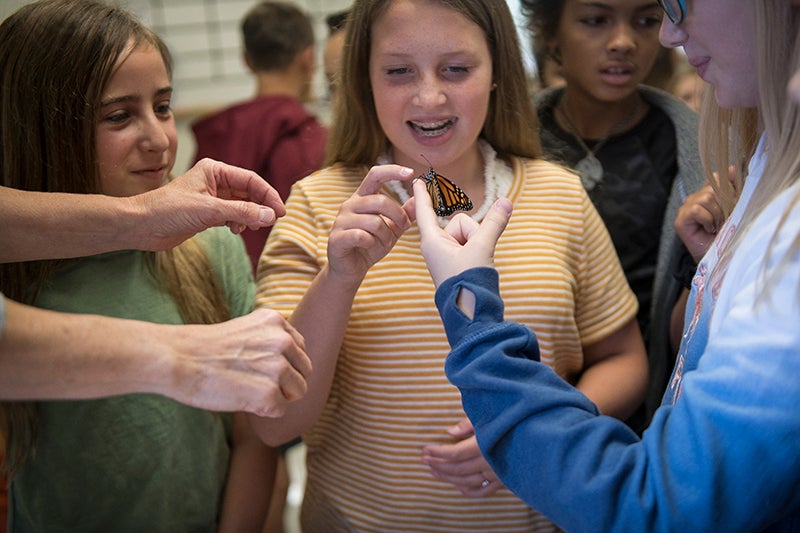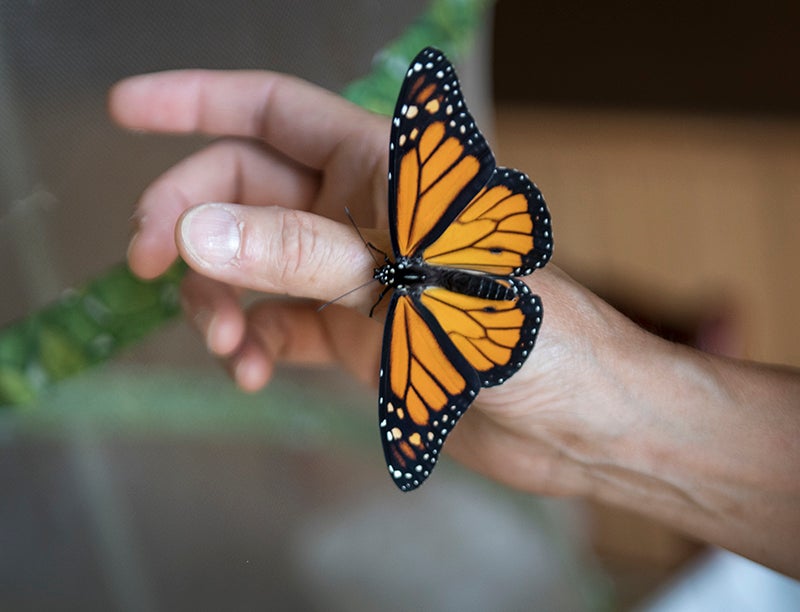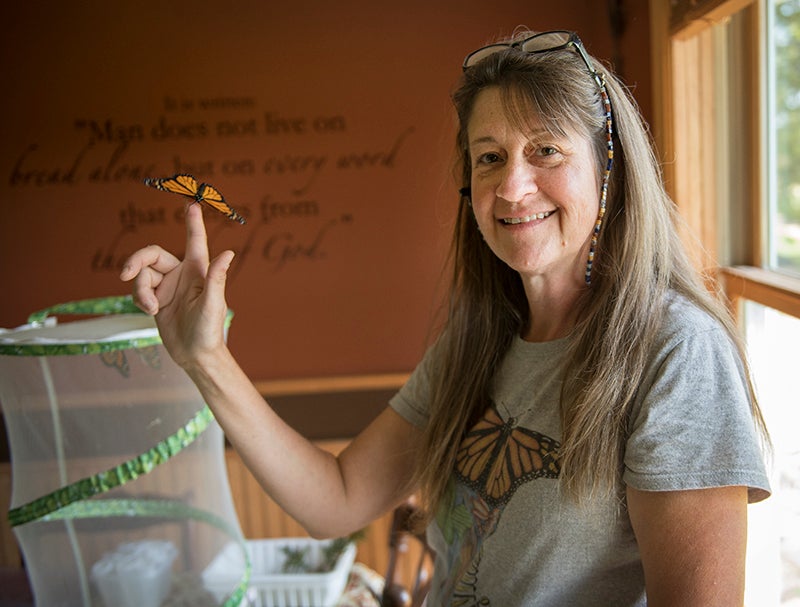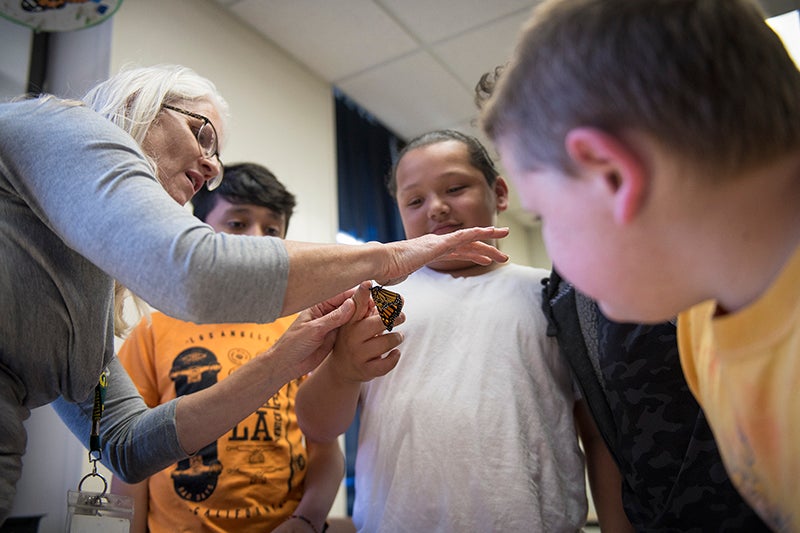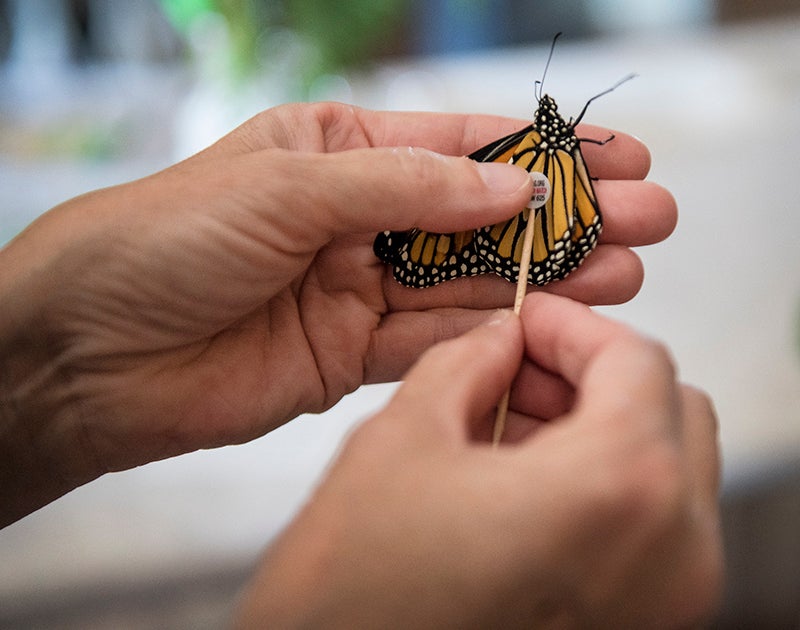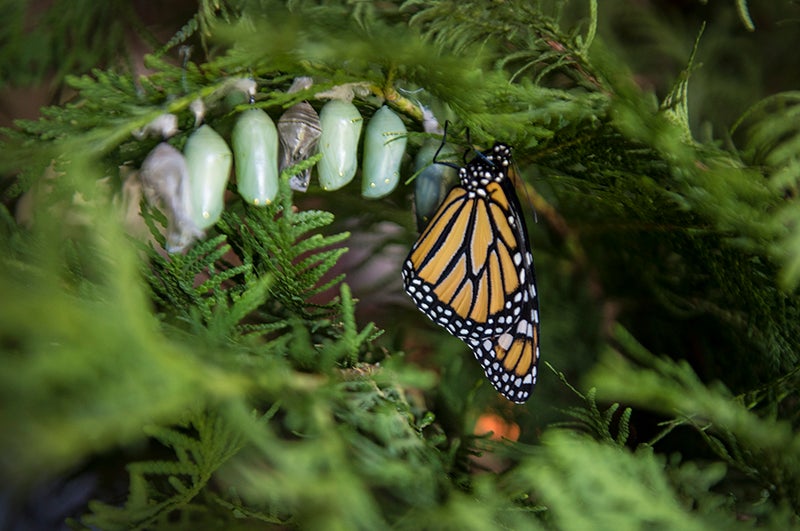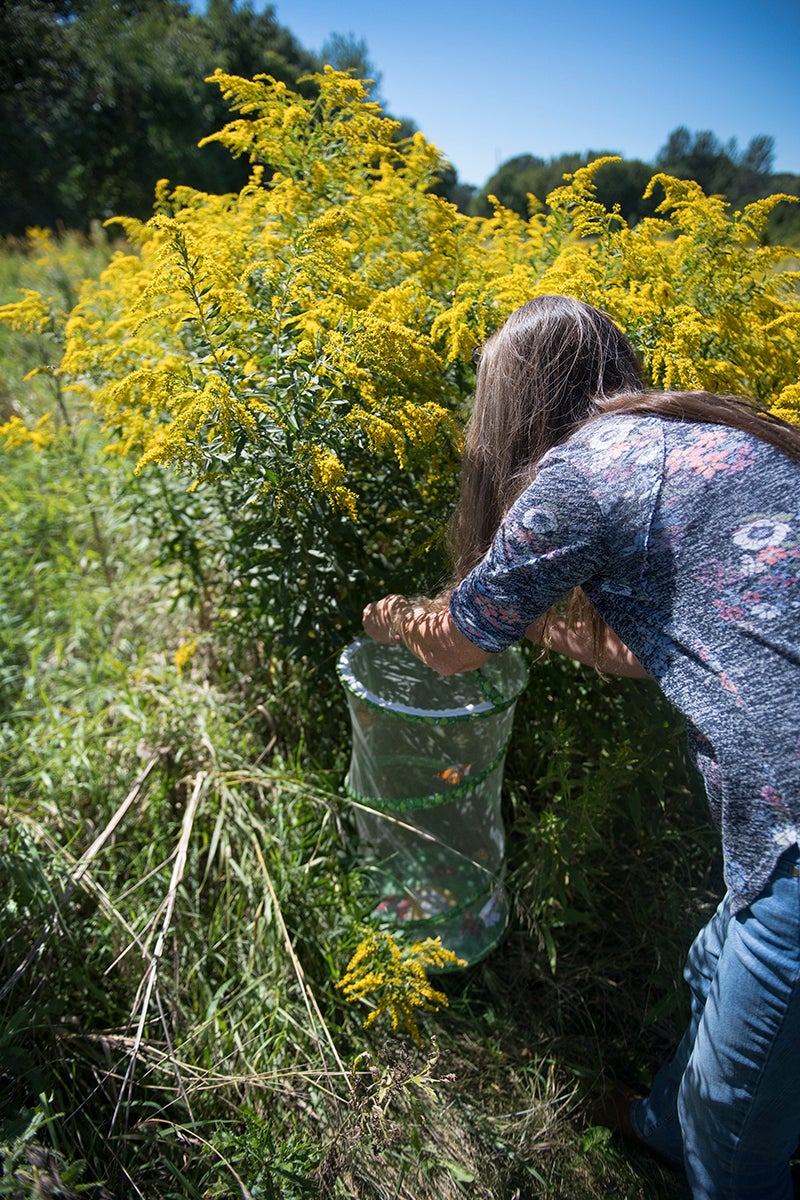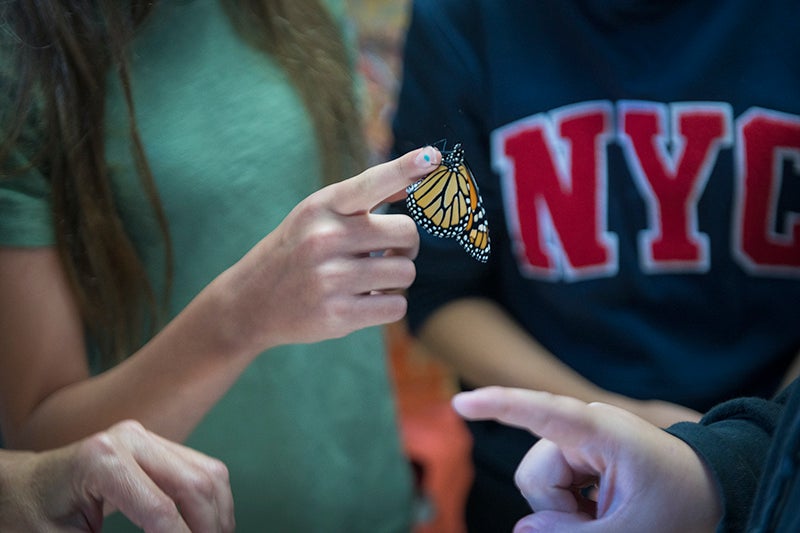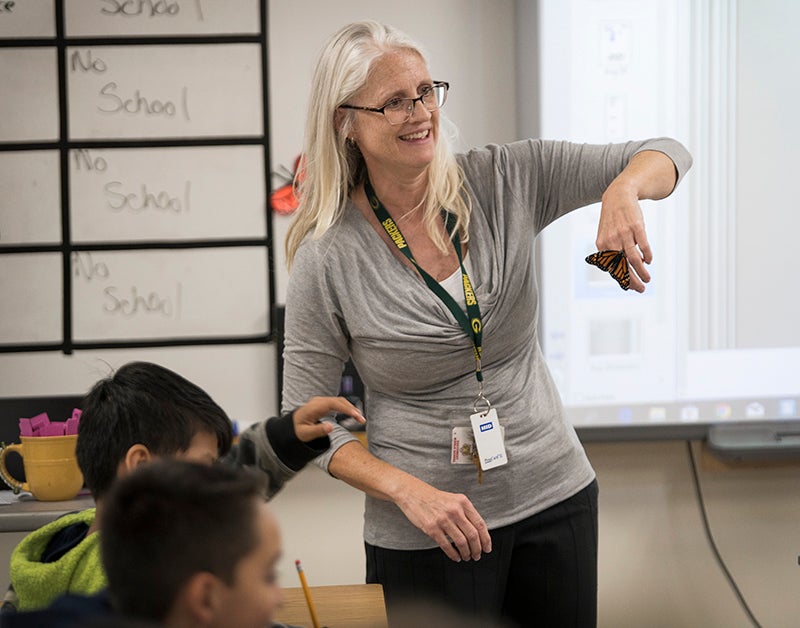‘Be fruitful and multiply’
Published 9:48 pm Friday, September 20, 2019
Local monarch raisers a puzzle piece in conservation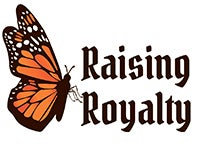
Editor’s note: This is the final piece in a four-part series.
A monarch butterfly rests on the lip of the cylindrical mesh container she called home for a short while, building up strength after emerging from her chrysalis. She vibrates her wings rapidly, warming them for launch.
She launches herself into the air with a downward thrust of her two orange wings, built in secret to carry her about 3,000 miles south.
Tammy Solomonson watches, laughter bubbling out each time she spots a monarch in flight.
“Every time I just see one, it just brings joy to my heart,” Solomonson said.
And after spending several years raising monarchs in her home outside Hayward, she has seen a lot of them.
A few minutes earlier, Solomonson walked three female butterflies out to a patch of native flowers north of her driveway. Over the course of the summer, she did this same walk several times to release over 300 butterflies raised from egg to caterpillar to butterfly.
To protect them from predators like birds or wasps, she places their enclosure in the shade of a leafy bush and unzips the top. She waits — but not long.
“These girls are ready,” Solomonson said.
Bees and painted ladies buzzed and danced under a blanket of warm air and blue sky. The goldenrod bloomed and stretched up toward the early September sun.
Each butterfly receives a send-off blessing.
“God bless,” Solomonson tells them. “Be fruitful and multiply, and stay off the roads.”
She isn’t sad.
“When I look at them, just, I’m so excited for them,” she said. “Like, ‘You go, buddy!’ I just want them to go and get there.”
The great migration
The “there” is the Trans-Mexican Volcanic Belt pine-oak forests, where monarch butterflies overwinter.
The fliers are the fourth generation of butterflies for the year. The first generation is laid by the fourth from last year’s migration in Texas, and those travel north. The fourth generation of butterflies lives close to eight months, surviving migration, winter and then part of the trip back.
Tammy Solomonson said she notices a difference in the fourth generation as she rears them. Many of them are much bigger physically, she said she has observed.
“That’s a migrator right there,” she said, pointing to a chrysalis that was bigger and plumper than another compared side-by-side. “… You can tell they’re built to fly far.”
From research, Director of Monarch Watch and University of Kansas Professor Emeritus Chip Taylor can tell you that size does matter when it comes to butterflies reared indoors; the largest ones have the best chance of getting to Mexico, he said.
The discovery came through research with Monarch Watch, a research network studying the monarch butterfly with the help of a wide variety of people. The organization has made monarch tags — stickers smaller than a dime — available since 1992. In recent years, the number of tags distributed and the number of individuals or organizations purchasing tags have increased, which Taylor attributed to increased interest caused by concern for a declining population. While he doesn’t have an exact number of tags purchased this year, he said the number was likely several hundred thousand.
When Solomonson tags a butterfly, she uses a toothpick to place the sticker near the butterfly’s body. She holds it in place for four seconds, and then it’s done.
“We’re using those data to tell us about things that happen across the country within a season and among seasons,” Taylor said.
Those who tag butterflies are asked to turn in their data to Monarch Watch either by mail or entering it online. Citizen scientists record the tag number, sex of the butterfly, date tagged, location of the release and whether the butterfly was reared — what Solomonson does — or caught wild and tagged. This information can be used to answer many questions about butterfly migration, Taylor said. In its research, Monarch Watch is considering migratory success in relation to weather, location, sex and the time of year the butterfly was tagged.
Tagging data can also indicate what happened in the previous year, Taylor said. In 2012, Minnesota had a very hot, dry summer. The monarchs got to Mexico in poor condition, he said.
“They did not return to Texas in very good number,” he said.
According to Taylor, the following spring had the lowest population of monarchs ever.
Data from butterfly tags has shown researchers other things. Reared butterflies raised outdoors have a better chance of getting to Mexico, Taylor said. Reared butterflies raised on living plants rather than milkweed cuttings will likely do better. And wild-caught butterflies provide the best data, he said.
“People who rear them tend to tag every butterfly,” Taylor said.
But butterflies caught, tagged and released are a selected portion of the natural population. By the time a butterfly can be tagged in the wild, the weaker butterflies have likely already been winnowed out. Nature, he said, eliminates the unfit.
Monarch Watch relies on tour guides or residents of the overwintering area to collect the tags off monarchs that died at the overwintering site and purchases the tags back from those who collect them. But they cannot always connect with everyone who has collected tags on a yearly basis, Taylor said, which means it often takes four or five years to get most of the tags from a particular tagging year.
In an average year, they may recover 500 tags.
“There’s probably one tagged butterfly for every (20,000) to 40,000 untagged butterflies,” Taylor said. “There’s a mass of untagged butterflies there.”
This means coming up with tags can be difficult.
The number of butterflies making it to the wintering ground also varies widely. Taylor estimated 200 million monarchs started migration this year, and that about half of those would make it to Mexico.
Part of that success also depends on Texas.
“Texas can be a bottleneck if it’s too dry and there’s not enough nectar,” Taylor said. “… We can see in the data that getting to Mexico successfully is highly dependent on having nectar resources for the entire trip.”
‘They’re gonna be in trouble soon’
Loss of that habitat — of nectar resources from milkweed and nectar flowers — is the biggest cause of the overall decline of the monarch population in the last 20 years, said Monarch Joint Venture communications specialist Cora Lund Preston.
Therefore, one of the best things people can do to help monarchs is to restore that habitat by planting milkweed and fall-blooming flowers along the migration corridor, along which monarchs make their way south through the midwest toward the funnel into Texas and Mexico.
It’s a path traced roughly by Interstate 35. So in 2015, Monarch Joint Venture, a partnership between several agencies, organizations and programs working to protect the monarch migration, launched the Monarch Highway initiative, a collaboration among several state transportation agencies and other partners to increase habitat conservation along the I-35 corridor. Those departments are responsible for making sure there is habitat along the way.
While roadside habitat can pose some risks for monarchs who may be hit by cars or exposed to chemicals, “in general, the benefit outweighs the cost,” Lund Preston said.
“Roadsides represent a huge amount of land across the U.S., and we need to restore lots and lots of habitats for the monarchs in order to hit our conservation goals, so we need to use land from all kinds of different landscapes,” she said.
The effort is also intended as a catalyst to get others along the general area to create habitat, too. Anyone who lives in an I-35 state can be part of the Monarch Highway, Lund Preston said.
But there’s another concern for the monarch population, Chip Taylor said.
“The problem we face looking at all of this is that the climate is changing,” Taylor said.
From two decades of research at Monarch Watch and through other programs, weather data has told researchers how butterflies respond to extremes.
“The problem there is we are going to see a lot of extremes in the future,” Taylor said. “… They have the potential to drive this population down severely.”
Taylor referenced four “killing events” — extreme weather events at the overwintering sites with “catastrophic” impacts on the monarch population — in less than two decades. He expects more, and with more frequency.
“Monarchs are not in trouble now, but they’re gonna be in trouble soon,” he said.
‘It began with fascination’
Both Solomonson and Robin Hundley, an Albert Lea resident and friend of Solomonson who also spends every summer raising monarchs, have planting milkweed on their to-do lists. Hundley said she noticed cutting down her milkweed made it grow back stronger, so she plans to plant a second patch in her backyard so she can trim and rejuvenate her supplies while still having some for feeding and laying monarchs.
Solomonson said she wants to shift her focus to creating milkweed habitat. This is what she encourages those interested in monarchs to do.
The end of Solomonson’s monarch-rearing season ended dramatically, with an unknown suspected viral issue claiming many.
“Because of my traumatizing issue, I definitely have some changes to make,” Solomonson said. “I will never raise that many again. … Once you have a problem, you’ve created a problem for a whole lot of the caterpillars.”
For Hundley, raising butterflies — this year, 72 — is for her. She enjoys it as a hobby and way to learn.
Solomonson has leaned into the conservation side of the practice.
“It began with fascination, and then as I began to research a little more … I would hate to see something so beautiful and so innocent be gone,” she said.
Lund Preston said Monarch Joint Venture does encourage people raising monarchs to do so in smaller batches. However, she too encourages those interested in monarchs to channel that into habitat creation. Raising monarchs that do not have habitat to go back to doesn’t make as much of a difference as creating habitat. Conservation, Lund Preston said, is what will make the difference for the monarch population.
‘We’re not there yet’
The arrival in Mexico was promising last winter. The eastern monarch population — separated from its western brethren by the Rocky Mountains — rose 144% from last year, the World Wildlife Foundation-Mexico and Comision Nacional de Areas Naturales Protegidas reported in January. It was the largest population since 2007, Monarch Joint Venture reported on its website.
It is a hopeful sign, Lund Preston said. But the monarch butterfly, whose population has been in decline for several years, is an insect.
“Fluctuation is really normal in insect populations,” she said.
Last year was a good year. When the butterflies reach their overwintering grounds, their counts are measured in the amount of space they take up, and last year, the population hit 6 hectares (almost 15 acres) of forest, she said. But that was last year.
“We want to see that as an average, and we’re not there yet,” Lund Preston said.
The U.S. Fish and Wildlife Service is also keeping close tabs on the monarch population; it’s part of their deep dive into determining whether the monarch butterfly should be listed under the Endangered Species Act.
The U.S. Fish and Wildlife Service was petitioned to list the monarch as endangered in 2014. Their decision on whether to recommend the butterfly for listing was originally due in June, but the Fish and Wildlife Service was granted an extension. The new deadline is December 2020.
That gives the Fish and Wildlife Service time to complete a status assessment based on five criteria spelled out in the Endangered Species Act, said Georgia Parham, U.S. Fish and Wildlife Service external relations contact regarding endangered species. Endangerment caused by any of the five factors on the list could lead to a species being recommended for listing. According to the U.S. Fish and Wildlife Service, those factors include:
• The present or threatened destruction, modification or curtailment of its habitat or range
• Overutilization for commercial, recreational, scientific or educational purposes
• Disease or predation
• The inadequacy of existing regulatory mechanisms
• Other natural or manmade factors affecting its survival.
There is still a lot of ground to cover between now and December 2020, Parham said. The timeframe extension lets the Fish and Wildlife Service work with another year of wintering data and get another population count.
“What this extension does is give us that much more information,” Parham said.
Listing the monarch butterfly as endangered could change how people like Solomonson and Hundley interact with the insects — but that depends on what the 2020 proposal is, Parham said. Threatened species have more “engagement flexibility.”
But at this point, Parham said she was not sure what the impact would be for those who raise butterflies. In addition to recommending the species for listing as endangered or threatened, the U.S. Fish and Wildlife Service could decide a listing isn’t warranted at all.
But whatever the outcome, Parham said the Fish and Wildlife Service supports people who plant milkweed and do their part to help monarchs and other pollinators.
“Regardless to this decision, (pollinators are) a really high priority for the Fish and Wildlife Service,” Parham said.
‘A beautiful creature’
For Hundley, the last butterfly hatch of the season marks a return to normalcy. The green netting comes down, the plastic caterpillar-holding containers relinquish their firm hold on a corner of her home and the milkweed, growing steadily from a crack in her back patio, gets pulled out.
“There’s a little bit of sadness, but it’s good to have it come to a close,” she said.
Still, the bold, capital-lettered sign by Solomonson’s driveway (SLOW DOWN BUTTERFLY CROSSING) stays up. During the next few weeks, the field of grass studded with purple coneflower by Solomonson’s driveway will be “plum full” of monarchs as the butterflies make their way down from Canada.
Solomonson will call out to them. She will tell them they are beautiful.
“You just can’t help but look at a beautiful creature that is a predator to nothing and not want to save it,” Solomonson said.


